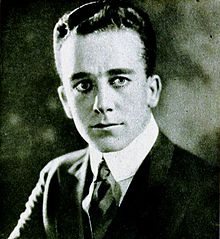
Alfred Allen Santell (1895–1981), was an American film director and film producer.

The King of Kings is a 1927 American synchronized sound epic film produced and directed by Cecil B. DeMille. It depicts the last weeks of Jesus before his crucifixion and stars H. B. Warner in the lead role. While the film has no audible dialog, it was released with a synchronized musical score with sound effects using the RCA Photophone sound-on-film process.

Arthur Edeson, A.S.C. was an American cinematographer. Born in New York City, his career ran from the formative years of the film industry in New York, through the silent era in Hollywood, and the sound era there in the 1930s and 1940s. His work included many landmarks in film history, including The Thief of Bagdad (1924), All Quiet on the Western Front (1930), Frankenstein (1931), The Maltese Falcon (1941), and Casablanca (1942).

Dorothy Mackaill was a British-American actress, most active during the silent-film era and into the pre-Code era of the early 1930s.
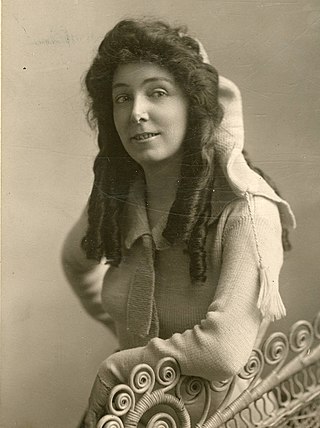
Edythe Chapman was an American stage and silent film actress.
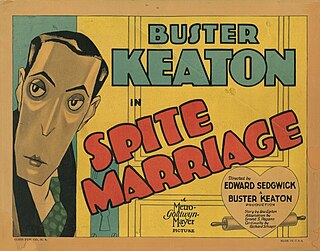
Spite Marriage is a 1929 American silent comedy film co-directed by Buster Keaton and Edward Sedgwick and starring Keaton and Dorothy Sebastian. It is the second film Keaton made for MGM and his last silent film, although he had wanted it to be a "talkie" or full sound film. While the production has no recorded dialogue, it does feature an accompanying synchronized score and recorded laughter, applause and other sound effects in some scenes. Keaton later wrote gags for some up-and-coming MGM stars like Red Skelton, and from this film recycled many gags, some shot-for-shot, for Skelton's 1943 film I Dood It.

Safe in Hell is a 1931 American pre-Code melodrama directed by William A. Wellman and starring Dorothy Mackaill and Donald Cook, with featured performances by Morgan Wallace, Ralf Harolde, Nina Mae McKinney, Clarence Muse, and Noble Johnson. The screenplay by Joseph Jackson and Maude Fulton is based on a play by Houston Branch.

Just Another Blonde is a 1926 American silent romantic comedy / adventure film distributed by First National Pictures. Based on the short story "Even Stev'en" by Gerald Beaumont, the film was directed by Alfred Santell and stars Dorothy Mackaill, Jack Mulhall, and Louise Brooks.

The Dancer of Paris is a lost 1926 American silent drama film produced and distributed by First National Pictures. It was directed by Alfred Santell and starred Dorothy Mackaill. A vintage movie trailer displaying short clips of the film still exists.
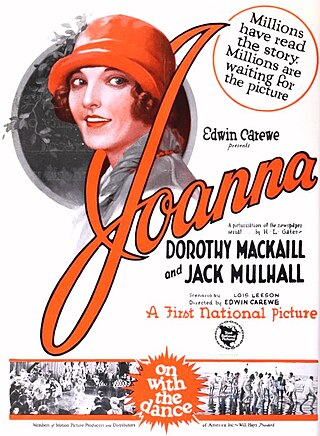
Joanna is a 1925 American silent romantic comedy film produced and directed by Edwin Carewe and distributed by First National Pictures. The film was based on the short story "Joanna, of the Skirts Too Short and the Lips Too Red and the Tongue Too Pert" by Henry Leyford Gates. The film starred Dorothy Mackaill and Jack Mulhall and marked the first motion-picture appearance of Mexican actress Dolores del Río.
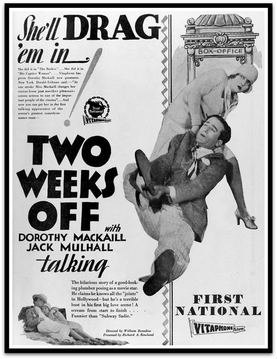
Two Weeks Off is a 1929 American sound part-talkie comedy film directed by William Beaudine. In addition to sequences with audible dialogue or talking sequences, the film features a synchronized musical score and sound effects along with English intertitles. The soundtrack was recorded using the Vitaphone sound-on-disc system. A complete nitrate print survives at UCLA.

Picture Brides is a 1933 American Pre-Code adventure film, directed by Phil Rosen. The film stars Dorothy Mackaill, Regis Toomey and Alan Hale.
The Doctor's Secret is a 1929 American drama film directed by William C. deMille and written by William C. deMille. The film stars Ruth Chatterton, H. B. Warner, John Loder, Robert Edeson, Wilfred Noy and Ethel Wales. It is based on the 1913 play Half an Hour by J. M. Barrie. The film was released on January 26, 1929, by Paramount Pictures. As part of the policy of multiple-language versions during the early sound era, a separate Swedish version was produced at the Joinville Studios in Paris and released the following year.
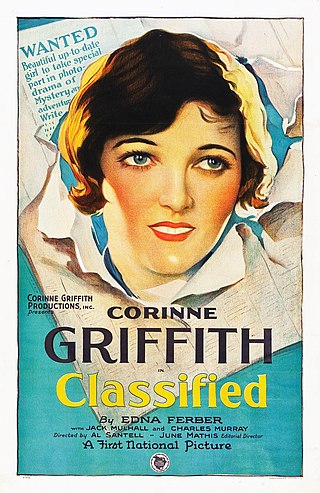
Classified is a 1925 American silent drama film directed by Alfred Santell and produced by and starring Corinne Griffith. It was based on a novel by Edna Ferber and distributed through First National Pictures.

The Crystal Cup is a 1927 American silent drama film directed by John Francis Dillon and written by Gerald Duffy and Mort Blumenstock. It is based on the 1925 novel The Crystal Cup by Gertrude Atherton. The film stars Dorothy Mackaill, Rockliffe Fellowes, Jack Mulhall, Clarissa Selwynne, Jane Winton, and Edythe Chapman. The film was released on October 16, 1927, by First National Pictures.

Man Crazy is a 1927 American silent comedy film directed by John Francis Dillon and written by Dwinelle Benthall, Rufus McCosh, and Perry Nathan. The film stars Dorothy Mackaill, Jack Mulhall, Edythe Chapman, Phillips Smalley, Walter McGrail, and Ray Hallor. Man Crazy was released on November 27, 1927, by First National Pictures.
Smile, Brother, Smile is a 1927 American comedy film directed by John Francis Dillon, and written by Dwinelle Benthall, Rufus McCosh and Rex Taylor. The film stars Jack Mulhall, Dorothy Mackaill, Philo McCullough, E. J. Ratcliffe, Harry Dunkinson and Ernest Hilliard. The film was released on September 11, 1927, by First National Pictures.
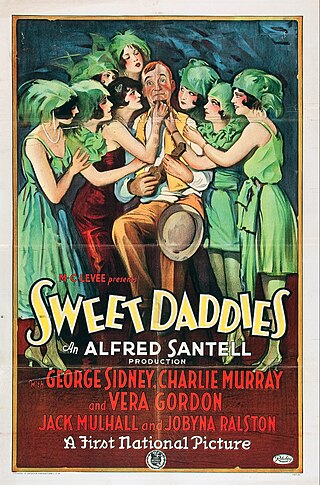
Sweet Daddies is a 1926 American silent comedy crime film directed by Alfred Santell and starring George Sidney, Charles Murray, and Vera Gordon. The film foregrounds positive relationships between Jewish and Irish American characters, despite the presence of some stereotypes.

The Lunatic at Large is a 1927 American comedy film directed by Fred C. Newmeyer and starring Leon Errol, Dorothy Mackaill and Warren Cook. Written by Ralph Spence, it is based on the 1899 novel The Lunatic at Large and its sequels The Lunatic at Large Again (1922), The Lunatic Still at Large (1923), and The Lunatic In Charge (1926) by British writer J. Storer Clouston, which had previously inspired a 1921 film of the same title. The film shifted the setting from the original's London to New York. The film was released on January 2, 1927, by First National Pictures.
Al Rockett, born Albert L. Rockett, was a movie producer. His 1924 film Abraham Lincoln, produced with his brother Ray Rockett, was a major production. It won the Photoplay Medal of Honor for 1924 from Photoplay Magazine, the most prestigious American film award of the time. He was born in Vincennes, Indiana, and played piano in a nickelodeon theater for five years. He worked for First National Pictures and Fox Film Corporation.


